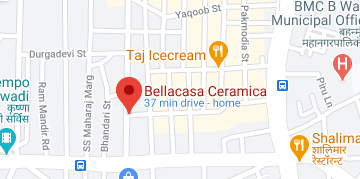The Formula for Calculating the Internal Rate of Return

Thus, JKL Media, given its projected cash flows, has a project with a 17.15% return. If there were a project that JKL could undertake with a higher IRR, it would probably pursue the higher-yielding project instead. The higher the internal rate of return (IRR), the more profitable a potential investment will likely be if undertaken, all else being equal. The IRR measures the compounded return on an investment, with the two inputs being the value of the cash inflows / (outflows) and the timing, i.e., the coinciding dates. This decision would be wrong when we consider the sizes of the NPVs of the projects. The best decision would be to go for the project with the highest NPV, and that is project Z.
- This can happen if any of the cash flows from a project are negative, aside from the initial investment.
- Under XIRR, daily compounding is assumed, and the effective annual rate is returned.
- For example, a corporation will evaluate investing in a new plant versus extending an existing plant based on the IRR of each project.
- Among the various methods available, Internal Rate of Return (IRR) and Net Present Value (NPV) are prominent tools widely used in the field of finance.
- Without a computer or financial calculator, IRR can only be computed by trial and error.
- In general, when comparing investment options with other similar characteristics, the investment with the highest IRR probably would be considered the best.
What Is IRR Used For?
For this reason, many investors use the Modified Internal Rate of Return, or MIRR, which account for these assumptions. Therefore, if the cost of capital remains below this rate, Oilfield A will yield a higher NPV; otherwise, Oilfield B will surpass Oilfield A in terms of NPV. Below the crossover rate, a conflict arises between NPV and IRR analyses. However, above this rate, both analyses will favor Oilfield B over Oilfield A. AFP’s mission is to drive the future of finance and treasury and develop the leaders of tomorrow through certification, training, and the premier event for treasury and finance. NPV is sensitive to changes in the discount rate, decreasing as the rate increases, while IRR stays constant.
Multiple IRR and No IRR Problem
Rather, they will likely pursue projects with the highest difference between IRR and RRR, as these will likely be the most profitable. Individuals can also use IRR when making financial decisions—for instance, when evaluating different insurance policies using their premiums and death benefits. The consensus is that policies that have the same premiums and a high IRR are much more desirable. In capital planning, one popular scenario for IRR is comparing the profitability of establishing new operations with that of expanding existing operations. For example, an energy company may use IRR in deciding whether to open a new power plant or to renovate and expand an existing power plant. The IRR is simple to use and does not require a hurdle or benchmark rate.
NPV vs IRR Excel Template
IRR is calculated by setting the NPV of a series of cash flows to zero and solving for the discount rate. IRR can be solved manually through trial and error, though it is more efficient to leverage software programs to calculate IRR. Unlike the IRR, a company’s net present value (NPV) is expressed in a dollar amount. It is the difference between a company’s present value of cash inflows and its present value of cash outflows over a specific period of time. In order to calculate the multiple-of-money (MoM), or multiple on invested capital (MOIC), we’ll calculate the sum of all the positive cash inflows from each holding period. For independent, conventional projects, the decision rules for the NPV and IRR will both draw the same conclusion on whether to invest or not.
What is IRR?
Thus, you can see that the usefulness of the IRR measurement lies in its ability to represent any investment opportunity’s possible return and compare it with other alternative investments. To determine the internal rate of return (IRR) on the LBO investment in Excel, follow the steps below. The value of the initial investment stays unchanged regardless of which year the firm exits the investment. Suppose a private equity firm made an equity investment of $85 million in 2022 (Year 0). The alternative formulas, most often taught in academia, involve solving for the IRR for the equation to hold true (and require using a financial calculator).
IRR Uses

Several important decision-making criteria are used to evaluate capital investments. The two most comprehensive and well-understood measures of whether or not a project is profitable are the net present value (NPV) and the internal rate of return (IRR). Other measures include the payback period, discounted payback period, average accounting rate of return (AAR), and the profitability index (PI). For example, a project may require a very large investment, consuming all of a company’s capital and producing a large NPV. That big, positive total value may make this look like a winner, but the project could have a low IRR, indicating the rate at which it generates those returns is low. It may be better to choose three smaller projects that generate the same total NPV if they all have higher IRRs.
Get instant access to video lessons taught by experienced investment bankers. Learn financial statement modeling, DCF, M&A, LBO, Comps and Excel shortcuts. Therefore, the exit proceeds in Year 1 are $110 million, while in Year 3, the proceeds come out to $160 million. Of course, the magnitude by which an investment grows matters, however, the pace at which the growth was achieved is just as important.
The IRR formula can be very complex depending on the timing and variances in cash flow amounts. Without a computer or financial calculator, IRR can only be computed by trial and error. However, how to pay taxes as a freelancer if the projects are mutually exclusive, then, only one project would be chosen. If one were to pick one project based on internal rates of return of the projects, then one would go for Y.
Many accounting software programs now include an IRR calculator, as do Excel and other programs. A handy alternative for some is the good old HP 12c financial calculator, which will fit in a pocket or briefcase. In other words, positive NPV investments are wealth increasing, while negative NPV investments are wealth decreasing. It’s important to note that certain assumptions can cause the IRR to become overstated. For this reason, many investors use the Modified Internal Rate of Return, or MIRR, which accounts for these assumptions.

